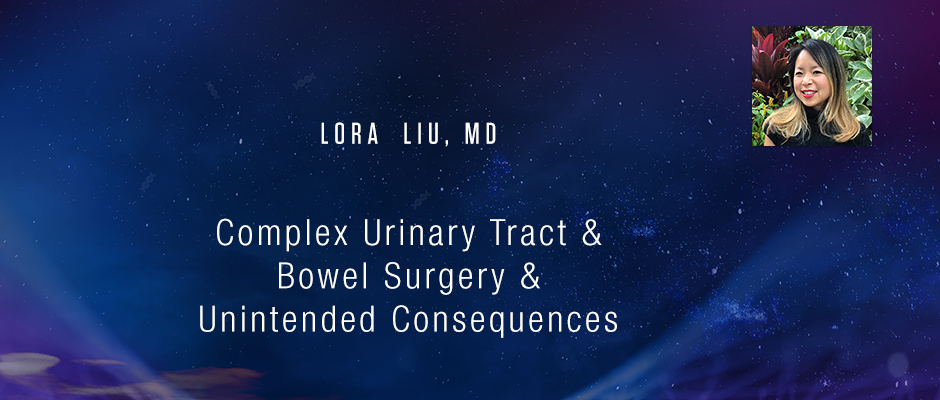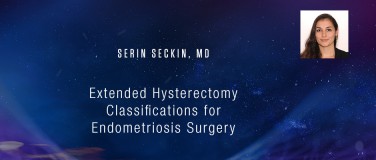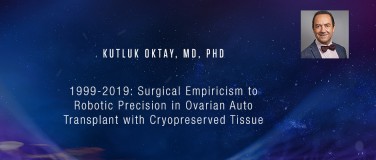Lora Liu, MD - Complex Urinary Tract & Bowel Surgery & Unintended Consequences
Endometriosis Foundation of America
Medical Conference 2019
Targeting Inflammation:
From Biomarkers to Precision Surgery
March 8-9, 2019 - Lenox Hill Hospital, NYC
https://www.endofound.org/medicalconference/2019
Thank you. Yes, I'm Dr. Liu. I had the distinct pleasure of joining Dr. Seckin in practice along with Dr. Goldstein about four or five months ago. Like they already mentioned, I am a graduate from Lenox Hill OB/GYN residency, so I've known Dr. Seckin for quite while and was trained by Dr. [inaudible 00:00:38], Dr. Seckin, Dr. [Romoff 00:00:40] and then went on to do a fellowship in minimally invasive surgery at Mayo Clinic in Arizona, and then graduated in July. Took an extended vacation where I didn't have to worry about ureters or hemoglobins or anything like that for a good four months, which was awesome. Then I came back home to Lenox Hill. It's been such a great privilege to have joined Dr. Seckin and Dr. Goldstein.
Just really quick, I really like this quote by Sir Isaac Newton over 300 years ago, where he gives credit to his predecessors for his accomplishments, and he acknowledges that he could not be where he is today, or where he was, without the work of his predecessors. That's exactly how I feel today. I just want to take, you know, the opportunity to acknowledge the roomful of giants that are here today, and want to thank you for letting me and the future generation stand on your shoulders.
So really, I'm just going to present some cases that we've done recently and some complicated, complex surgeries. So, I'll just get started. The first one is a 36-year-old nulliparous. She came to practice with a known history of endometriosis. She had the typical symptoms. She had a lot of pelvic pain, dysmenorrhea, then she also had right hydronephrosis. She actually only had 15% function of her right kidney. She was seen at an outside facility where they thought she had pyelonephritis and did a nephrostomy, put in a stent. She also had bowel complaints. She had a previous ileocecal resection for some obstruction which was probably due to endometriosis. That was complicated by post-operative leak as well. She also had fibroids and adenomyosis to add to the fun. She desired fertility.
So, we took her to the OR. That's her past surgical history. I'm just going to show you a quick clip. So, we had already done the adenomyomectomy. She required sigmoid resection reanastomosis that we did with our general surgeon. We ended up having to remove her right ovary in two because it was plastered to the right pelvic sidewall. She had marked fibrosis of the ureter, and so Dr. Seckin just went for it. This all came back endo. We sent all of this and it all came back endometriosis with invasion. So, he resected quite a bit of it as you can see. Then just did a primary tension-free reanastomosis. The patient did very well afterwards. We left the nephrostomy tube in for about two weeks and then the right J stent in for about six weeks. It was removed. She had another renal scan where she had regained maybe to 25% function of her right kidney, so definitely improved. She's doing really well.
The next one is 46-year-old para 1. She had, again, the basic complaints: pelvic pain, dysmenorrhea, menorrhagia, dyschezia. She was actually operated on three weeks prior for bilateral endometriomas. We sono'd her again and she still had endometriomas, so I'm not sure what exactly happened in that surgery. She elected for definitive therapy, so we did a TLH, BSO, excision of endometriosis. We did a cystoscopy afterwards. On cystoscopy, we noticed that she didn't have any efflux of urine from her left UO. We waited and gave her Lasix and finally had to put the scope back in. We saw a ... Ooh, sorry ... dilated left ureter. It seemed to be kinked, so we dissected all the way basically into the into the UV junction, all the way down. You can see on the right, that's the vaginal cuff. Then we thought maybe it was just kinked, but you can see there that there seems to be some thermal injury where that white tissue is. Then it's pretty dilated.
So, we called the urologist, did another cysto. While we were waiting for the urologist to come, we actually saw bilateral jets but we still did a J stent in the left ureter. We were going to keep it in for about one or two weeks just to let it heal, but she elected to have it removed because she was really uncomfortable. She elected to have it removed I think post-op day five. Post-op day seven she came back and she was leaking so we did a CT, which showed a fistula. So, we took her back. We were just going to try to replace the stent. If that didn't work then we were going to have to do a reimplantation.
This is just a brief video of the ureteroscopy, which was very, very difficult just because it was very swollen. It took like 20 minutes to even find the UO. He finally did and we were able to place a stent. That's just confirmation of the stent. She went home with a Foley and the left stent for about ... The Foley was in for about eight weeks. The stent was in for about 12 weeks. She had it removed and is doing great. She didn't have to have any other intervention.
Do you want me to continue or do you want to [inaudible 00:07:31]? Okay. Here's another fun one. A 39-year-old P2. She was [inaudible 00:07:39] laparoscopic hysterectomy, LSO, right salpingectomy for left ovarian endometrioma. During that surgery it was very difficult. She had a cystotomy repair and also rectal serosal repair. She came in leaking urine from the vagina post-op day 10. CT abdomen showed a right ureterovaginal fistula. So, we took her to the OR. We tried to place retrograde stents, ureteral stents. Unable to do that, so then we had to guide in the stent laparoscopically. So, there's that. You can see the right ureter very dilated and fistula tract and then the vaginal vault. [inaudible 00:08:26] we had to resect all the dead tissue from the right ureter as well as excise the tract. Then after that, we did an omentoplasty and she did very well. Good now? Okay, that's good. All right. Thank you.










